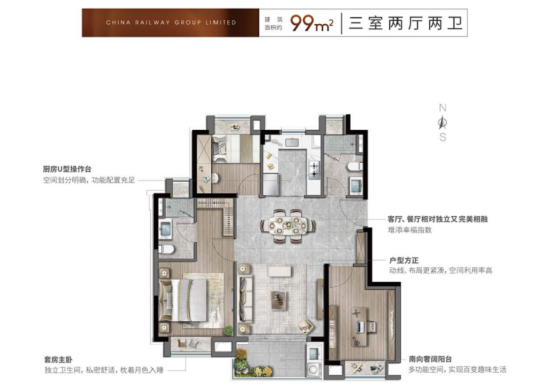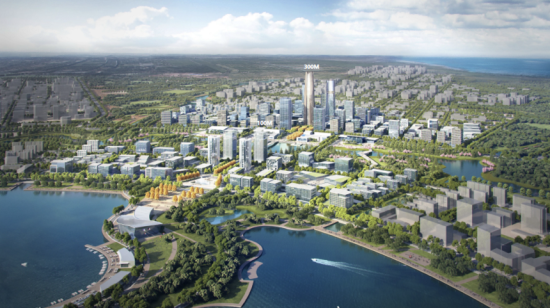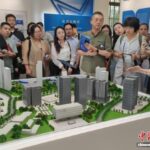Shanghai’s latest property market policy adjustment, “eligible local and non-local families (non-locals must have paid social security/tax for one consecutive year) are no longer restricted by the number of homes they can purchase outside the outer ring,” has activated demand for “improved job-housing balance purchases” from industrial talent outside the outer ring and “upgrading replacement demand” from spillover from the city center. As a strategically key development area in Shanghai, the Lingang area, with its industrial benefits and policy support, is expected to become a core destination for this influx of demand. Within this area, the CREC Nord • Jingchen project, with its rare residential land attributes, commuting advantages from the Lianggang Express Line, unit designs that precisely match demand, visible quality assurance, livable community environment, and high-quality property services, may become the “preferred benchmark” for home purchases outside the outer ring under the new policy.
Irreplaceable Value of the Area
The core direction of the new policy, “no restrictions on the number of homes purchased outside the outer ring,” has made “scarcity” a key criterion for homebuyers. Relying on its planned attributes of thriving north-south offshore finance, foreign trade, and digital industries, the Lingang 105 area is referred to as Shanghai’s next “Lujiazui” and will determine the upper limit of Lingang’s future development. Recently, the official designation of kindergartens, Shanghai University of Finance and Economics Affiliated Primary School, and Dishui Lake School in the area has been established. The 105 area is building residential appeal to “attract and retain talent” with tangible urban amenities.
The relaxation of purchase restrictions has allowed CREC Nord • Jingchen, located in the 105 area, to meet this core demand. An interested client working in Lingang Financial City stated they “value the area’s industrial potential and mature amenities,” appreciating its dual value of “industry + residence,” which also confirms the project’s locational advantage under the new policy.
Transportation Empowers Commuting
The new policy has activated not only local demand but also “cross-district purchasing” demand from spillover from the city center. The transportation advantages of CREC Nord • Jingchen precisely address the core pain point of “long commutes from outside the outer ring.”
The project is adjacent to the interchange station of the Lianggang Express Line and the Nanfeng Line (scheduled to open in 2027), just 1 kilometer from the Open Area Station TOD. After the Lianggang Express Line opens, it will take only 7 stops to reach Zhangjiang. This enables people working along the Zhangjiang and Pudong Airport routes to achieve a “30-minute commute circle.”
In addition to rail transit, the project’s entrance on Hucheng Ring Road seamlessly connects to Lingang Avenue and Lianggang Avenue, with access to the S2 Hulu Expressway and S3 Hufeng Expressway (under construction), reaching Shanghai’s main urban area within an hour. The surrounding area has already formed a multi-dimensional transportation network of “rail + expressway + bus,” which will be further upgraded with the area’s development.
Product Design Precisely Matches Demand
The unit designs of CREC Nord • Jingchen precisely match the “one-step solution” needs of different customer groups.
The 89㎡ three-bedroom, two-bathroom unit, with its “three south-facing rooms + U-shaped kitchen” design and approximately 79% ultra-high usable area rate, well matches the needs of budget-conscious families under the new policy—”spend less money, enjoy more space.” It can meet the living needs of a family of three without the worry of future replacement pressure, making it the preferred choice for “low threshold, high cost-effectiveness.”

The 99㎡ garden-style home, with its 11-story low-density attribute, one elevator for two households, and waist-level entry design, precisely suits first-time upgraders or customers with higher requirements for living quality. The usable area rate of this product is higher than that of conventional high-rises, further improving space utilization. The classic airplane-style layout and three south-facing spaces ensure ample sunlight in the living room and bedrooms.
The differentiated positioning of the two unit types covers the two core customer groups under the new policy—budget-conscious families and first-time upgraders—creating




